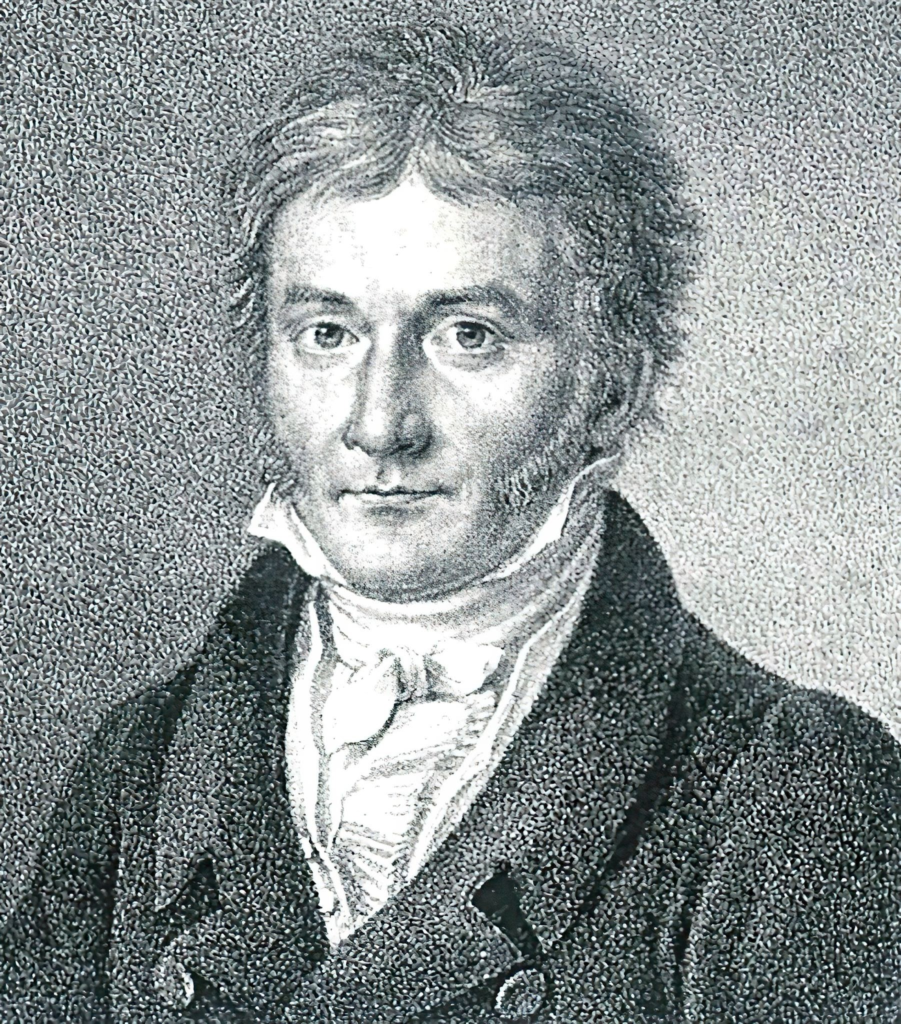Electrical Flux and Gauss’s Law
Introduction
In the realm of physics, particularly in electromagnetism, Gauss’s law, also referred to as Gauss’s flux theorem or simply Gauss’s theorem, stands as one of Maxwell’s equations. It establishes a connection between the arrangement of electric charge and the ensuing electric field. I know this might sound a bit intimidating, but don’t worry – we’re going to break it down and make it totally relatable. So, buckle up, because we’re about to demystify two important concepts: Electrical Flux and Gauss’s Law.
What is Electrical Flux?
Alright, imagine you’re at the Niagara Falls watching water go over the falls. You know how you can measure the amount of water passing through a particular area in a given time interval? Based on that you are able to multiple it by the length of the falls can calculate how much water goes over the falls per unit time. Well, in a similar way, electrical flux is like measuring the flow of electric field lines passing through a given surface.

Simply put, electrical flux tells us how much electric field is “flowing” through a given surface. It’s like a sneak peek into the invisible forces surrounding charged particles. The cool thing is, it depends on how the surface is oriented with respect to the electric field – so, if you rotate the surface, you’ll get different flux values.

How is electric flux used?
The electric flux ΦE through a surface is related to electric field lines passing through a closed surface. It helps calculate the net charge enclosed within the surface by Gauss’s law and is valuable in analyzing electric fields around charged objects, capacitors, and understanding the behavior of electric fields in different situations.
Although we can draw as many electric field lines as we want to represent the electric field, electric flux has a definite value. If E is uniform (that is, constant in magnitude and direction) and a flat area A is perpendicular to E then,

Does electric flux depend on angle?
Yes, electric flux depends on the angle between the electric field lines and the surface area of the closed surface. When the electric field lines are perpendicular to the surface, the electric flux is maximized. In contrast, if the lines are parallel or at an angle, the flux decreases accordingly. If E is uniform over a flat area A, with an angle φ then ΦE = EA⊥, where A⊥ = A cos φ. That is,

Using E cos φ = E⊥,

Also, using EA cos φ = E·A,

That area vector A has a magnitude A (in m2) and a direction normal (that is, perpendicular) to the surface. For closed surfaces, A and dA are always outwardly normal to the surface. E⊥ is the component of E perpendicular to the surface (and parallel to A or dA ). φ is the angle between the directions of the vectors E and A or dA .

In general, E and/or φ may not be constant over the area, so dΦE = E cos φ dA, which is the mathematical definition of electric flux:

Gauss’s Law Demystified
Alright, we’re about to meet the man himself – Carl Friedrich Gauss, the brain behind Gauss’s Law. Picture this: Gauss was this genius from the 19th century, and he came up with this mind-blowing law that’s the backbone of electromagnetism.

So, what’s Gauss’s Law all about? it relates the electric field to the charge distribution. It says that the total electric flux through a closed surface is equal to the total charge enclosed by that surface divided by a constant called the permittivity of free space.
What is Gauss law in simple terms?
Gauss’s law in simpler terms, states the amount of electric field passing through a surface to the charge present inside that surface, providing a mathematical way to understand electric fields around charged objects. to find the non-integral form of Gauss’s law (in vacuum ≈ air):

, as well as the three integral forms of Gauss’s law:

(All forms include “= Qencl/ε0 ”.) Recall that ε0 = 8.854 × 10–12 C2/N·m2 . The symbol o∫ means to integrate over a closed surface, so the electric flux ΦE in Gauss’s law is the net (that is, total) electric flux through that closed surface, and Qencl is the net (that is, total) charge enclosed by that surface.
Is a Gaussian surface real or imaginary?
A Gaussian surface is a closed mathematical surface whose purpose is to simplify calculations of electric flux. It does not have to coincide with any material surface.

if E = 0 then all excess charge is found on the surface of a solid electrical conductor that has its free charges at rest overall (that is, under electrostatic conditions).
For uniformly distributed charges: the |charge| per volume is ρ (rho) (in C/m3),

the |charge| per area is σ (sigma) (in C/m2),

, and the |charge| per length is λ (lambda) (in C/m),

where |q| is the absolute value of the charge (in C) spread uniformly over the volume V (in m3), area A (in m2), and/or length L (in m).
Understanding Electric Fields and Their Behavior
Before we go further, let’s talk about electric fields – those invisible forces that interact with charged particles like they’re having a secret dance party. You’ve probably experienced electric fields firsthand when you got zapped by static electricity, right?

These fields surround charged particles like a protective bubble and can either attract or repel other charged particles. They’re like the puppeteers pulling the strings of charged objects, making them dance to their electrifying tune.
How Electrical Flux and Gauss’s Law Shape Electric Fields
Now, let’s see how electrical flux and Gauss’s Law come together to shape electric fields. Imagine you have a closed surface (like a magical bubble) surrounding a charged object. Gauss’s Law tells us that the total electric flux passing through that surface is directly related to the total charge enclosed by the bubble.
When we know the charge inside the bubble and the shape of the bubble’s surface, we can use Gauss’s Law to calculate the electric field at any point outside the charged object. It’s like peeking inside the bubble and knowing exactly what’s going on with the electric field outside.
Finding a charge distribution from a known electric field:
Imagine the cross section of a conductor (with its free charges at rest overall). There is a cavity in the conductor that contains a charge q that is insulated from the conductor. If the material of the conductor, E = 0, so Gauss’s law (∫ E *dA =Qencl/ε0) becomes 0 =Qencl /ε0 . Therefore, Qencl = 0 (and ΦE = 0) for all Gaussian surfaces that are completely in the material of the conductor.
Since Qencl = 0, the excess charge qcw on the cavity wall, (that is, the inner surface of the conductor) is
qcw = –q and the excess charge is zero in the bulk of the material of the conductor (qbulk = 0). Therefore,
any excess charge is only the conductor’s surfaces—the cavity wall and the conductor’s outer surface: qtotal on conductor = qcw + qouter surface.
For example, suppose that the total excess charge on the conductor is –9 nC and there is +6 nC on the
cavity wall. (That is, qtotal on conductor = –9 nC and qcw = +6 nC.)
First, the excess charge in the bulk of the conductor’s material is zero. Second, qcw = –q tells us the insulated charge in the cavity must be q = –6 nC. Third, qtotal on conductor = qcw + qouter surface becomes –9 nC = +6 nC + qouter surface, so the charge on the outer surface must be qouter surface = –15 nC.
Applying Gauss’s law to different shapes
Okay, enough theory – let’s see some action! Imagine we have a positively charged sphere, and we want to find the electric field just outside of it. Gauss’s Law to the rescue!
First, we draw a closed surface that encloses the charged sphere. Then, we calculate the total charge enclosed by the surface (remember, the charge inside the bubble!). Once we have that, we divide it by the permittivity of free space and voilà! We’ve got the electric field just outside the charged sphere. Easy-peasy!
What is spherical symmetry in Gauss law?
Spherical symmetry in Gauss’s law refers to a situation where an electric field is radially symmetric around a point charge. The electric flux through a closed spherical surface depends only on the enclosed charge, not its distribution.
- Finding electric fields from given symmetric charge distributions:
a) Spherical symmetry: Given a sphere of uniform positive charge density ρ and radius R. - Use an integral form of Gauss’s law, for example, o∫ E cos φ dA =Qencl/ε0 .
- Choose a symmetric Gaussian surface: in this case, the surface of a concentric (same center) sphere of radius r.
- E is away from the enclosed positive charge and so is radially outward while dA is always outwardly normal and so is also radially outward. Therefore, the two vectors E and dA are parallel , so φ = 0 and cos φ = cos 0 = 1 Thus, ∫ E cos φ dA =∫ E (1)dA.
- E is constant by symmetry, so we can take it out of the integral: ∫ E (1)dA = E ∫ dA.
- Then∫ dA = Aspherical surface = 4πr2 so that the left side of Gauss’s law (∫ E cos φ dA) equals E4πr2. Therefore,

(telling us that outside of a spherically symmetric charge distribution, the electric field looks like
E =(1/4πε0)* (|q|/r2) as if all the charge were concentrated at the sphere’s center). For r ≤ R (inside the sphere of charge), there is a charge throughout the entire volume of the Gaussian surface (of radius r). Thus, Qencl = ρVencl = ρ4/3πr3, so

What is the Gauss law for flat symmetry?
Flat symmetry: Given a very large flat horizontal conductor with its free charges at rest overall. It has a
uniform negative surface charge density –σ on its bottom surface and no other excess charge.
- Use an integral form of Gauss’s law, for example, ∫ E cos φ dA =Qencl/ε0 .
- Choose a symmetric Gaussian surface: in this case, the surface of a cylinder with its vertical axis perpendicular to the bottom surface of the conductor. The top and part of the side of the Gaussian cylinder are in the material of the conductor. The bottom of the Gaussian cylinder is below the flat conductor’s bottom surface and has area A.
- Break the integral into three parts: ∫ E cos φ dA = ∫E cos φ dA (top) +∫E cos φ dA (side)+ ∫E cos φ dA (bottom).
- In the material of a conductor with free charges at rest overall, E = 0, so ∫E cos φ dA = ∫0 cos φ dA = 0. (That is, there is no electric flux ΦE through the top.)
- Part of the side is in the conductor where E = 0. The rest of the side is outside the conductor where E is toward the enclosed – charge, making E parallel to the side. dA is always outwardly normal and so is perpendicular to the side. Therefore, the two vectors E and dA are perpendicular to one another , so cos φ = cos 90 ̊ = 0 so ∫E cos φ dA = ∫0 dA = 0. (That is, there is no electric flux ΦE through the side.)
- Over the bottom of the Gaussian surface: E is toward the enclosed – charge and so is toward the bottom surface of the conductor. dA is always outwardly normal and so is away from the bottom surface of the conductor. Therefore, the two vectors E and dA are antiparallel (opposite) to one another , so φ = 180 ̊ and cos φ = cos 180 ̊ = –1. Thus, ∫E cos φ dA = ∫E(–1)dA .
- E is constant by symmetry, so we can take it out of the integral: ∫E(–1)dA = –E ∫dA .
- Then ∫dA = A. Thus, the left side of Gauss’s law (o∫ E cos φ dA ) equals 0 + 0 + (–EA) = –EA.
- Since Qencl = –σA, o∫ E cos φ dA =Qencl ε0 becomes –EA = –σAε0 , or E = σ/ε0
What is the Gauss law for cylindrical symmetry?
The Gauss law for cylindrical symmetry states that the electric flux through a closed cylindrical surface is proportional to the total charge enclosed within the cylinder. Cylindrical symmetry: Given a very long rod of charge of radius R, much larger length L, volume charge density ρ, and linear charge density λ.
- Use an integral form of Gauss’s law, for example, o∫ E cos φ dA =Qencl/ε0 .
- Choose a symmetric Gaussian surface: in this case, the surface of a coaxial (same axis) cylinder of radius r and length l (l << L).
- Break the integral into three parts: o∫ E cos φ dA = ∫E cos φ dA + ∫E cos φ dA + ∫E cos φ dA.
- Over both ends: E→ is away from the enclosed + charge and so is radially outward. dA→ is always outwardly normal and so is parallel to the axis of the coaxial cylinder. Therefore, the two vectors E→ and dA→ are perpendicular, so φ = 90 ̊ and cos φ = cos 90 ̊ = 0. Thus, ∫E cos φ dA = 0 =∫E cos φ dA . (That is, there is no electric flux ΦE through the ends.)
- Over the side: E is away from the enclosed + charge and so is radially outward. dA is always outwardly normal and so is also radially outward. Therefore, the two vectors E and dA are parallel, so φ = 0 and cos φ = cos 0 = 1. Thus, ∫E cos φ dA = ∫E(1)dA .
- E is constant by symmetry, so we can take it out of the integral: ∫E(1)dA = E ∫side dA .
- Then ∫dA = Aside = 2πrl. Thus, the left side of Gauss’s law (∫ E cos φ dA ) equals 0 + E2πrl + 0 = E2πrl.
- For r ≥ R (outside the cylindrical charge distribution), Qencl = ρπR2l or λl.
- Thus, ∫ E cos φ dA = Qencl/ε0 becomes E2πrl =ρπR2l or λl/ε0 . Solving,

Real-World Applications and Implications
Now, you might wonder, “Why do we even bother with all this electric field stuff?” Well, my friends, understanding electrical flux and Gauss’s Law is crucial in designing and building all the cool electronic gadgets we love!
Think about it – from your smartphone to your computer, everything runs on electricity. And to make these devices work efficiently and safely, engineers need to know how electric fields behave in different situations.

For example, when it comes to transmitting power over long distances, knowing how electrical flux distributes can help us design more efficient power lines. It’s like having a superpower to optimize energy transmission!
But wait, there’s more! Ever heard of electromagnetic compatibility testing? It’s like a compatibility check for electronic devices, making sure they play nice with each other without causing interference. Understanding electrical flux and Gauss’s Law plays a key role in this too!
So, my friends, the world of electrical flux and Gauss’s Law might seem like a complex web of equations and theories, but it’s what makes our modern technology dance to the tune of electricity. Embrace the knowledge, and who knows, you might be the next genius engineer shaping the future of electromagnetic wonders!
And hey, let’s not forget about electromagnetic shielding – the superhero of electronic protection. We use this concept to create shields that keep unwanted electromagnetic fields from messing with our sensitive electronic equipment. Gauss’s Law helps us understand how to set up these shields and keep our gadgets safe and sound.
Now, I know we’ve covered a lot, and you might be thinking, “Do I really need to know all this to get through life?” Well, maybe not for everyday tasks, but having a basic understanding of electrical flux and Gauss’s Law can be super handy. Next time you use your smartphone, watch a movie on your tablet, or turn on a light switch, just remember that all of that tech magic is happening thanks to these fundamental principles.
Conclusion
Alright, folks, we’ve journeyed through the electric universe, exploring electrical flux, Gauss’s Law, and their incredible influence on electric fields. Remember, you don’t need to be an Einstein to grasp these concepts; it’s all about breaking them down into bite-sized pieces and connecting them to things we encounter in our daily lives.
So, the next time you see a thunderstorm brewing or experience a hair-raising static shock, you’ll know that there’s a fascinating dance of electric fields happening all around you. Embrace the wonder of electromagnetism, and who knows, you might even start seeing everyday objects in a new electrifying light!
As we wrap up this electrifying adventure, I hope you’ve had as much fun learning about electrical flux and Gauss’s Law as I did sharing it with you. So, keep that curiosity alive, my friends, because the world of science and technology is full of electrifying discoveries waiting for us to unravel.




